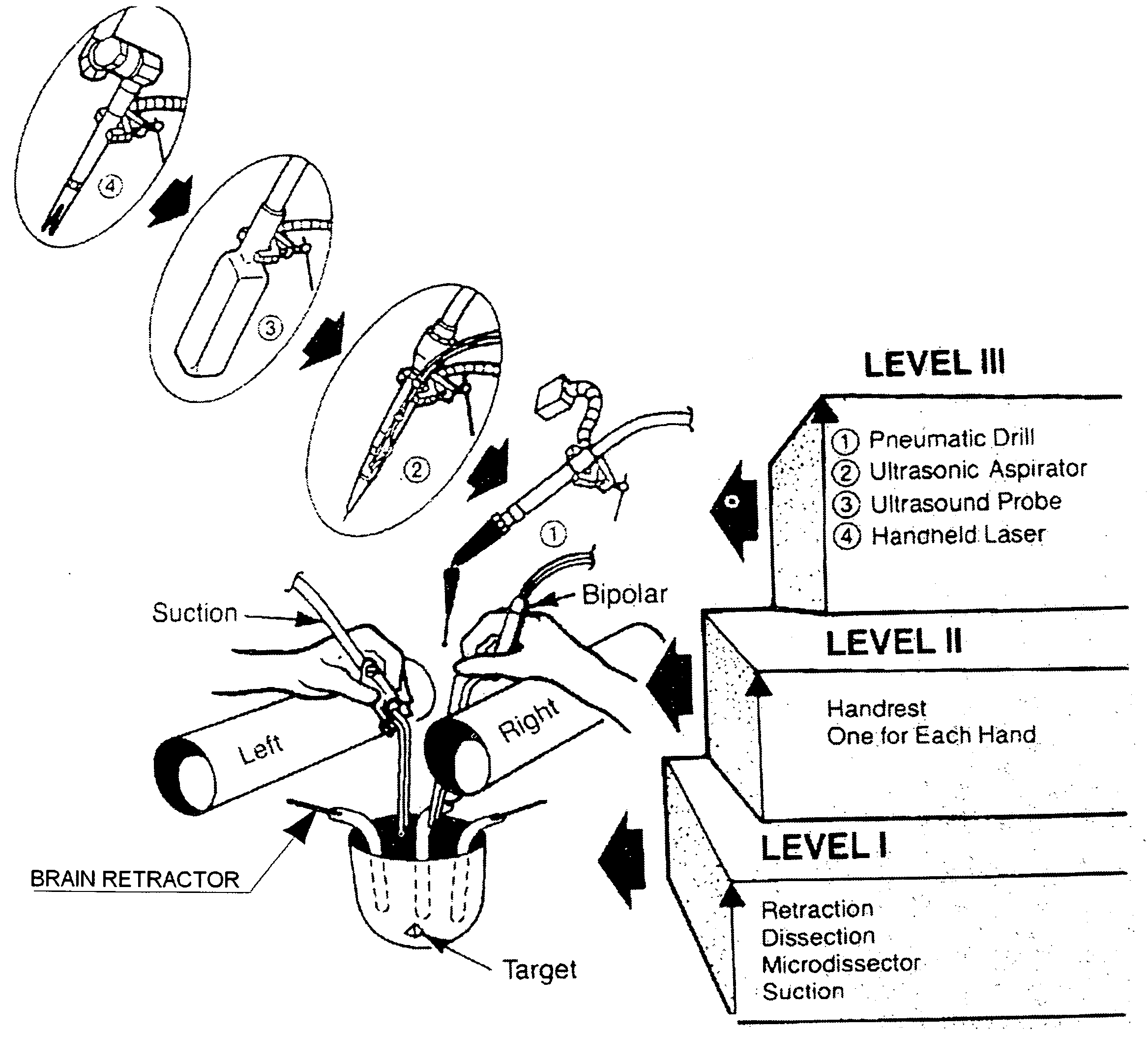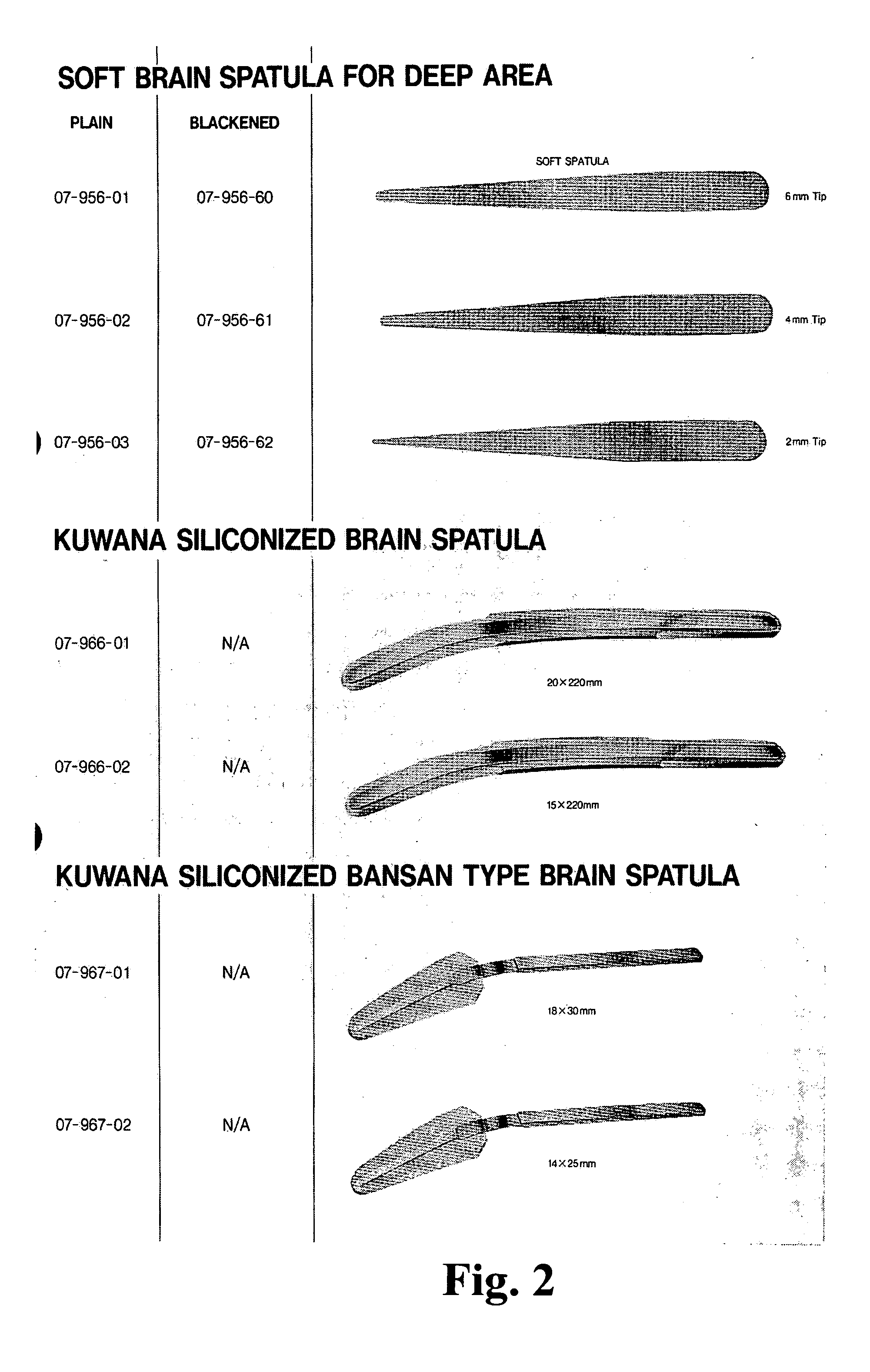Peak contact pressure sensor system (PCPSS) and smart brain retractor system (SBRS)
a sensor system and contact pressure technology, applied in the field of medical equipment and procedures, can solve the problems of increased medical costs, prolonged hospital stay, tissue damage, etc., and achieve the effects of convenient and fast diagnosis, low cost, and convenient us
- Summary
- Abstract
- Description
- Claims
- Application Information
AI Technical Summary
Benefits of technology
Problems solved by technology
Method used
Image
Examples
Embodiment Construction
Overview
The Smart Brain Retractor System (SBRS) comprises a Peak Contact Pressure Sensor System (PCPSS). During tissue retraction, the Peak Contact Pressure Sensor System (PCPSS) continuously monitors the contact pressure between the retractor and the tissue, and activates an alarm if and when the pressure exceeds a threshold level.
The Peak Contact Pressure Sensor System (PCPSS) comprises a network of flexible, gas-filled channels which engage the tissue during retraction, and a monitor for monitoring the gas flow through those channels and / or the gas pressure within those channels. The flexible channels are configured so that they will deform at a contact pressure which is lower than a threshold pressure level, i.e., one which could damage the tissue. When the flexible, gas-filled channels deform due to excessive contact pressure between the retractor and the tissue, gas flow through the channels and / or pressure within the channels is altered, whereupon the monitor activates an...
PUM
 Login to View More
Login to View More Abstract
Description
Claims
Application Information
 Login to View More
Login to View More - R&D
- Intellectual Property
- Life Sciences
- Materials
- Tech Scout
- Unparalleled Data Quality
- Higher Quality Content
- 60% Fewer Hallucinations
Browse by: Latest US Patents, China's latest patents, Technical Efficacy Thesaurus, Application Domain, Technology Topic, Popular Technical Reports.
© 2025 PatSnap. All rights reserved.Legal|Privacy policy|Modern Slavery Act Transparency Statement|Sitemap|About US| Contact US: help@patsnap.com



